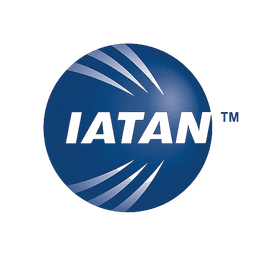


This is a summary of Nick's experience in Choquechaca. To read his full article, click here.
A day’s hike from the Sacred Valley hamlet of Ollantaytambo, through lush agricultural valleys that quickly turn to steep shrub-covered slopes, sits the Choquechaca plane. This isolated clearing, surrounded by peaks scraping the sky at 20,000 feet, is the humble home of the Sincha family, several generations of indigenous locals who have survived in this rural part of Peru by living off the land just as their Incan ancestors did hundreds of years before.
Section Type: standardWidthImageS

A bumpy dirt road comes close to connecting to the valley to the outside world, but still requires a 3-hour hike from the road to the clearing.
SA Expedition’s co-founder, Nick Stanziano, stumbled upon this Andean outpost seven years ago when he lived on the outskirts of Ollantaytambo, working with a NGO focused on improving working conditions for Inca Trail porters. Repeated solo treks into and around Choquechaca led to his familiarity, and eventual friendship, with the Sincha family (Nick with the family pictured below, photo taken in 2005).
When Nick first started visiting, the family clan consisted of three brothers, their wives, and 14 children. The three brothers (Valentine, Adrian, and Mario) spoke Spanish as well as the indigenous language Quechua, which facilitated communication. After multiple visits to the valley and numerous shared meals, the family invited Nick to become the godfather of 3-year-old Elena. In a traditional ceremony called Chukcha Rutukey, a practice stemming back to Incan times, they gave Nick the honor of cutting Elena’s hair for the first time and bestowing her with a traditional headpiece, officially making him part of the family as Elana’s godfather.
Years later, Nick now lives in Lima, Peru, and keeps busy with a daughter of his own, as well as the growing success of SA Expeditions, which he co-founded with David Rottblatt. He recently made time to take a trip from Lima to Cusco and back up into the Choquechaca Valley to visit his adopted Andean family.
The Sincha’s rural lifestyle contrasts drastically with Lima’s modern streets and contemporary setting. Although Peru is currently undergoing an economic boom, growing at a rate of nearly 6.5% since 2002, this improvement has largely bypassed the Sincha family and thousands like them. Of Peru’s 30 million residents, 8 million identify themselves as Quechua. Of these 8 million indigenous and primarily Andean inhabitants, 73% live below the poverty line.
The Sincha family survives off the land by growing several crops (primarily potatoes and corn), raising cuy (a type of guinea pig kept and consumed in a manner comparable to chickens), and maintaining a small herd of llama and sheep. The women of the family also weave colorful traditional textiles to complement the family’s few pieces of Western clothing while the men work part of the year as Inca Trail porters.
Section Type: standardWidthImageS
Ollantaytambo Market - World Wide Gifts

When Nick returned to the valley in May 2012, he discovered much of the family had migrated. His goddaughter Elena now lives with her brother in the small Sacred Valley town of Maras; they moved there in order to attend a local school. Elena’s parents, Valentine and Teofela, moved into the neighboring Patacancha Valley, closer to the dirt road, which eliminates the extra 3-hour walk.
Of the 14 Sincha children raised in the isolated valley, only one, Simiona, remains. She helps her mother, Valentena, maintain the herds and house. Several family members live in nearby towns where they have access to schools and basic amenities, such as electricity, which are lacking in the valley, yet they return frequently to Choquechaca to help maintain the family’s chacras (a local term for cultivated fields).
The Sincha family’s migration and basic modernization (they’ve received approval from the Ollantaytambo government for three solar panels) tells the story of contemporary Peru, a precarious balance between maintaining local traditions (dating back thousands of years) while also embracing the improvements modern conveniences can provide.
But change is slow. Although some of the Sincha clan have made it all the way to Lima, Elena’s parents, Valentine and Teofela, still live in a house with no running water or electricity, despite being closer to town and transportation.
Section Type: standardWidthImageS
Sacred Valley - Leonora (Ellie) Enking

Over shared shells full of canazo (cane liquor) in Valentine and Teofela’s humble house, Valentine, recently returned from working on the Inca Trail, told Nick about the challenges and benefits of tourism in the region, including how tourism can offer a way for families like his to utilize traditional practices to increase their meager household incomes.
Sustainable tourism in the Sacred Valley can offer locals a way to showcase the reality of rural Andean life while also offering an escape from substance farming, a lifestyle that inevitably forces families to disperse in search of better opportunities.
Thanks to McKay Savage for the title image of this blog.
Section Type: cta
Keen to see the Sacred Valley for yourself? Check out our Machu Picchu & Peru tours or speak to one of our Destination Experts about crafting the bespoke vacation of your dreams.


Copyright © 2026 SA Luxury Expeditions LLC, All rights reserved | 95 Third Street, 2nd floor, San Francisco, CA, 94103 | 415-549-8049
California Registered Seller of Travel - CST 2115890-50. Registration as a seller of travel does not constitute approval by the state of California.










